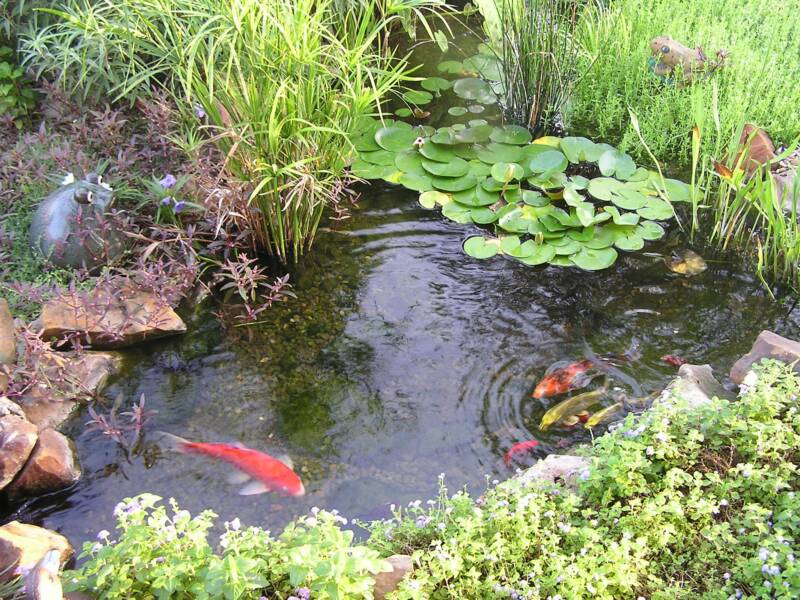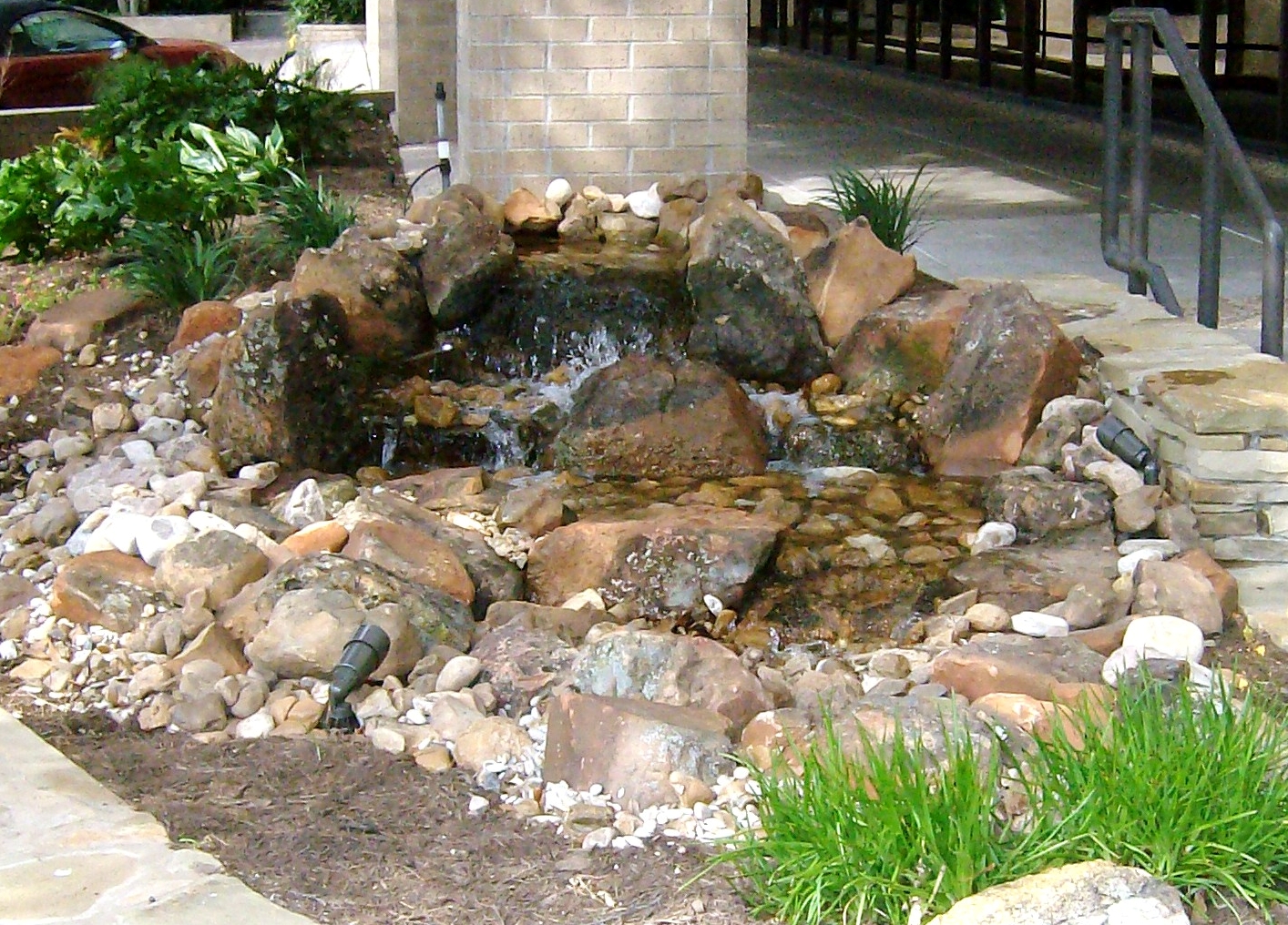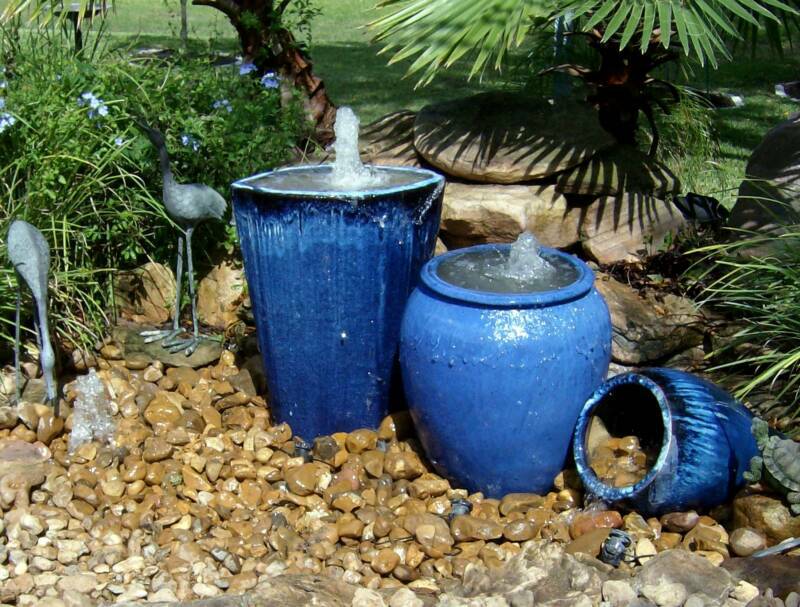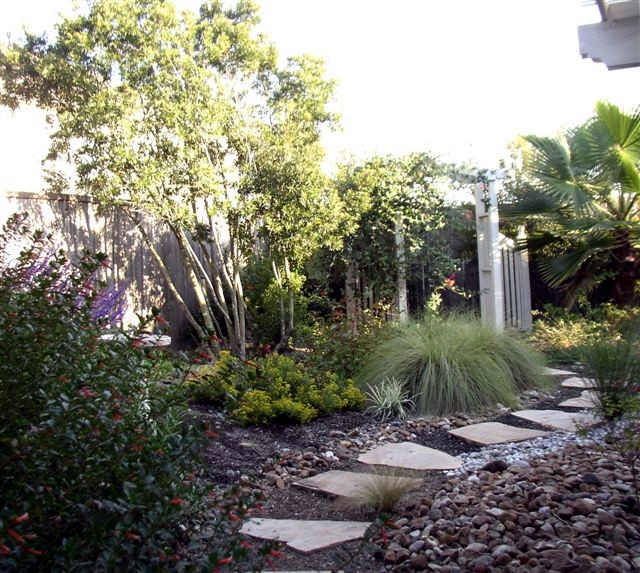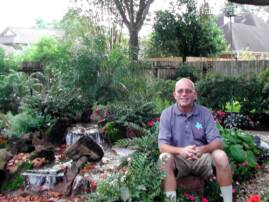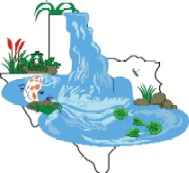


Rainwater Harvesting
Organic Ecosystem Ponds
Pondless Waterfalls
Urn and Fountain Features
Water-Wise Landscapes
Meet Your Water Feature Professionals


Texas Ponds and
Water Features
Naturalizing Your Water Feature
by Matt Boring
The Natural Water Gardener
For those of us who strive toward making our backyard water gardens look like a piece of nature’s work rather than our own, there are several tricks of the trade that come into play. Besides using natural stone and gravel in the pond to hide the liner and give beneficial bacteria a place to colonize, there are things that you can do outside of the water feature to achieve a natural look. Incorporating one or more of these tricks into your water garden’s area will help you make your pond look as if it was there before the house was built and you simply landscaped the rest of the yard to feature the existing natural water feature. Since I was landscaper before diving into the world of water gardens, most of these points have to do with the plants that you install in and around the pond’s edge. However, above all, the placement of your water garden is one factor that can really help you maximize the enjoyment of your backyard vacation getaway.
Ideally, your pond should be situated so that it can be seen from as many view areas in and outside the house as possible. These would include the back patio or deck, the windows of the living room, breakfast nook, or bedrooms, perhaps even a balcony. The waterfall(s) should be angled so that they can be viewed from as many of these view areas as possible. Streams or waterfalls with multiple drops can use twists and turns so that the shimmering glint of moving water catches your eye from just about any angle from which the water feature can be seen. Usually I try to bring the pond part of the water feature as close to the house or patio as possible so that you can watch your outdoor aquarium in action. Your fishy and froggy new friends will entrance you, educate you, and make you laugh. It’s best to watch this underwater entertainment from up close. Plus, the relaxing sound of moving and falling water will relax you. You should have it within earshot of open windows and screen doors on comfortable evenings when the fireflies are just starting to show up and flash the cool green glows of summertime.
Here are some other tips to help your naturalize your little slice of paradise..........
Consider the mature size of the plants you install. Don’t plant something that’s gonna grow large between your view areas and the water feature just because it’s proportional when you bring it home from the nursery. Instead.......
Create a natural looking screen with taller plants behind the pond. You can really help complete the illusion of being out in nature if you can’t see that privacy fence when you look at your pond.
Use a mixture of evergreen and perennial plants so that the area will change seasonally, but some plants will hold their foliage all year long.
Contrast foliage and flower colors and textures.
Use flowering perennials that have different bloom cycles to create an area with constantly changing colors.
Variegated foliage can really brighten up a shady area and really looks cool when reflecting the golden glow of the pond lights at night.
Install some plants close to the pond and stream, but no closer than is practical. You’ll be sorry if you plant a Magnolia tree with an eventual spread of 30 feet or more on the edge of your 11-foot wide backyard pond. That’s an extreme example, but you get the idea.
Use some plants that slightly overhang the pond’s edge to help lose the hard edge of the pond.
Install some plants that grow in or out of the water inside your pond’s edge and plant the bank with the same plant to eventually eliminate the edge of the pond in that area and blend it seamlessly into the surrounding landscape. * Stay away from extremely aggressive plants when doing this or you risk these plants trying to take over!
Flowering plants tend to attract butterflies and hummingbirds.
Plants that produce berries tend to attract birds and are more attractive after leaf drop.
If there’s room, use low-growing ground covers between the pond and the main outdoor viewing area. (Turf is a ground cover.) As well as looking attractive, they will help hold the soil and prevent weed growth.
Most color plants are more effective in masses. Of course, size everything appropriate to your yard and water feature. Remember......
Stay in proportion to the size you have to work with.
Ornamental grasses have interest 10-11 months per year and can really help create the mood you’re looking for. Clumps of grass, even after they’ve turned brown for the winter lend a natural look to the area and look great with their seed pods covered with snow. Hey, it snowed in Galveston a couple of years ago so anything’s possible.
Use low-maintenance plants around a low-maintenance organic water garden to reduce the time you have to spend maintaining your back yard.
Use plants to hide the water source. My ponds are built using a BIOFALLS biological filter rather than sticking a hose or pipe between two stones. Like in natural waterfalls and streams, where water fills a low area and then spills over at the first available opportunity, this filter fills from the bottom. The water rises up through the filtration media, which houses millions of beneficial bacteria, and spills over the lip of the waterfall to begin its journey back to the pond. Filling the open top of the BIOFALLS with Parrot’s Feather or Hyacinth (where legal) hides the water source and looks more natural.
Collect moss from the woods or behind your air conditioner or wherever you find it and put it in areas where the waterfall keeps it constantly moist. (Not WET— from my own experience)
Add an old weathered log to the area, even placed to look as if it had fallen there, hanging over or into the water. Dig the other end into the ground if you have to.
My own preference is to use native plants whenever possible. This helps insure a low-maintenance pondscape as well as reducing or eliminating the need for additional watering, once they’re established. A typical water garden will use far less water than the same area planted in turf, especially the popular and thirsty St. Augustine. It also reduces the chore of mowing, is much more entertaining and educational and, properly done, adds more value to your property. Of course, if you’re going for a tropical or some other theme, this may not fit your goals.
Don’t worry about it too much. Plants can always be moved or replaced if they’re not working out the way you want. Not every plant will thrive in the location we want it to, no matter what the book or the plant’s label or the guy at the nursery says or even what our past experience with the plant tells us.
Above all, have fun. Water gardening should be a fun relaxing experience. If it’s not, you may be working too hard at it. My own water garden could be ignored for weeks at a time (to be perfectly honest, not in leaf-drop season) and still looked great.
Until next month.............Happy Pondering!

